Let me ask you a question…how often have you thought about whether you have a sustainable wardrobe or not? Is it something that your strive for? OR is it something that rarely, if ever, crosses your mind?
I have only been really focused on making my wardrobe as sustainable as possible over the past year. Although my commitment to stop buying fast fashion and to only shop at ethical brands has been going on a little longer, a sustainable wardrobe, not just an ethical one, is more recent.
Maybe you’re wondering right now: what’s the difference between an ethical wardrobe and a sustainable one? I personally believe that:
“you can have an ethical wardrobe that isn’t sustainable but it is difficult to have a sustainable wardrobe that isn’t ethical.”
For example, may have decided that you would only purchase new clothing from ethical brands. But if you’re continuously buying new pieces, that isn’t sustainable.
And if you’re buying clothing that is made from synthetic fabric, that isn’t sustainable either. Even clothing that has been made from recycled plastic will never break down at the end of it’s life cycle.
But if you’re buying your clothing as sustainably as possible, either via the secondhand market or from sustainable brands, this is inherently ethical.
If you have an opposing viewpoint on this, I would love to hear about it in the comment section!

So, how do you get to a more sustainable wardrobe?
I have 9 steps that can help you get started today! I know they work because they are the steps that I have followed and they’ve helped me to attain a more sustainable wardrobe.
1. Decide to reduce your consumption
The first step to a sustainable wardrobe is deciding to stop buying so much clothing. I know that this seems like an impossible feat at first! Trust me, I have been there and can attest to the doubts and fears…
What the heck will you wear if you’re not buying a few pieces of clothes a week (at least!)?!?
But the only way you can have a sustainable closet is to stop adding to it. And the thing is, once you stop overly consuming clothing, you can see what a waste it all was.
Tell me, how many times did you go shopping, drop $50 on an outfit and then maybe wear it once before tossing it to the back of your wardrobe? Only to find yourself a few days later out at the shops dropping another $50 on a whole new outfit, which you’ll likely treat the same way!
I feel okay saying this because I totally know how it goes. This was my pattern. And as much as I hope it’s not yours, I have a feeling that you may fall victim to this behavior sometimes too.
The most sustainable clothing is the stuff that you already own. I mean, you bought it all for a reason, right?
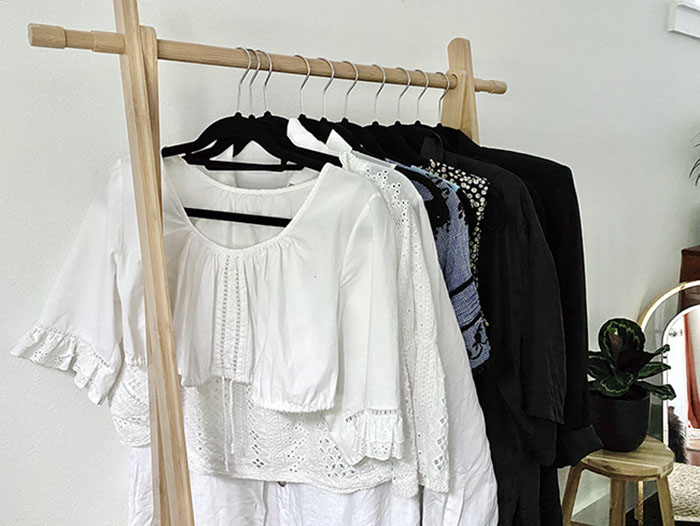
Work with what you have!
And if you have thrown it back into the bowels of your wardrobe, it’s time to pull it out, dust it off and figure out why you bought it in the first place. And then start wearing it.
- Look at all of the other pieces in your wardrobe and see what new outfits you can make.
- Think of unexpected color or pattern combinations to try if you’re into that.
- Think of other ways that you can wear an item…a dress styled as a skirt with a shirt on top, a dress styled as a top under a skirt, cropping a top with a belt, etc.
- See what monochromatic outfits you can make.
- What about pairing different styles together for a completely unique look…think hiking or biker boots with a romantic floaty dress.
Experiment and have fun! You won’t even want to go shopping!
2. Curate your current wardrobe
Now that you’ve made a commitment to curb your shopping, it’s important to spend some time going through your wardrobe and remove the items that you don’t feel great in.
- Try things on.
- Put items in a keep, maybe, and donate/sell pile.
- Assess the things in your keep pile. Make a list of the things that you like about them. Do you notice certain similarities to the things that you’ve kept…certain colors, styles, patterns, fabrics? This list will be very important when you go shopping again.
- Put your maybe pile away for a set time period. If you haven’t thought of anything in this pile for the allotted time period, donate or sell it. If you do think of something, write it down and see if you still want it at the end of the allotted time period.
Now get comfortable with the things that you’ve decided to keep for a while. Wear them. Make different outfit combinations with them. Use Pinterest to find inspiration for similar items. For example, to find inspiration on how to wear a midi skirt (if you have one in your wardrobe), search “midi skirt outfits“.
3. Make a commitment to get “30 Wears” out of your clothing
The ultimate sustainable goal would be to obviously wear our clothes, and then mend them, until they can no longer be used. But a secondary goal should be to try to get 30 wears from each of our clothing pieces.
According to WRAP, extending the life of our clothes by just nine months of active use, has the potential to reduce their carbon, water and waste footprint by around 20-30%.
Fashion Revolution
Fast fashion has made us think of clothing as disposable. And it requires a lot of effort on our part to reprogram the marketing message that we’ve been hearing for years, especially during our most impressionable teenage and young adult years.
As a result of this buy, buy, buy message, we don’t hold onto our clothing as long as we should, sometimes discarding it after a few months (speaking from past experience here…I would often have to declutter my closet just to make room for new purchases.)
Can you imagine, the number of clothes that end up in the landfill with so many people treating them as disposable? Or, that more accurately, get shipped off to another country to be their problem.
This wasn’t as big of an issue before the dawn of fast fashion when clothing was made from better materials and the craftsmanship was a higher quality.
But all of the fast fashion means that we are shipping horribly made synthetic clothing to other countries and they are just piling up because they have no resell value.
Watch this video for an in-depth view of the problem that our wastefulness has become for other countries.
4. Upcycle, alter and/or make your clothes
Do you have a few items in your wardrobe that you bought because you liked them, even if there was something a little off about them?
Isn’t there just always something a little off about things you buy at the mall?
Maybe some only require a simple alteration like shortening a hem or taking a little in on the waist. I am a big fan of raw hems on jeans…they always make an old pair feel fresh and new. Check out my tutorial here.
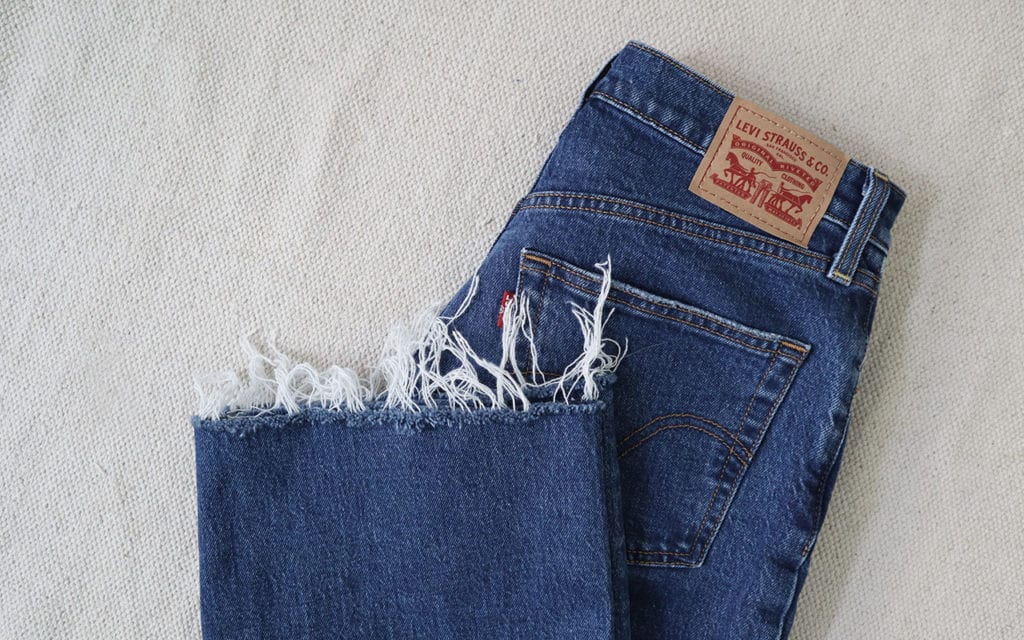
But maybe some require a little more creativity. Maybe that dress you bought would be better as a top or maybe the sleeves of one top would look amazing with that tank you never wear.
IF you have any sewing skills, see what “new” items you ca come up with, or bring your vision to a tailor. You never know what gorgeous, unique treasure you could come up with!
Check out this post for ideas to upcycle your clothes to create new looks.
OR, you can start making your own clothes, if that’s something that you’d like to do. As a beginning sewist with the most basic of sewing equipment, this is definitely a possibility. I have made 4 items of clothing for my capsule wardrobe since March, and 1 dress for my daughter.
You can read about 2 of my makes here and here.
[Edited to add a great point left in the comments by Ann: “purchase the most expensive, quality fabric you can afford. Just like fast fashion, bargain fabric is rarely worth your time and effort. Try for sales on really good fabric, but if you see something fabulous, just buy it! Fabric choice makes or breaks a home sewn project.]
5. Borrow or swap with friends
This is one of my favorites!!
Sometimes you need something for a special occasion or you’d just like to wear something “new”.
Swapping or borrowing from friends is such a great and sustainable way to refresh your wardrobe.
I think we rarely think to raid our friend’s wardrobes, especially as we get older.
Sure, we did it a lot in high school and college because we spent so much time together. But we get away from this once we no longer have roommates or we’re not constantly hanging out with out friends because of busier life after we acquire jobs.
And forgive me if you’ve heard this story before…
For a wedding last summer, I wore a dress that I’ve had for over a decade with a clutch and earrings that I borrowed from a friend. I felt so fabulous that evening and received so many compliments.
So let this option be at the very top of your list the next time you need something “new”.
Maybe you can even organize a swapping event with friends where everyone brings along clothes that they no longer want (once it is safe to gather in groups again).
Then everyone can “shop” and find some new things to add to their wardrobes in a sustainable way.
6. Purchase fewer but better pieces of clothing
When you do buy new clothes, do it slowly and with intention. Do it with a mind to the things that you are missing in your wardrobe.
This is the reason that the first step is so important.
By choosing to consume less, you become so much more aware of the items that you currently have. Once you’ve spent some time assessing what you already own, you are so much more aware of the things that would be beneficial to add. It helps you make more informed choices. Which means you’ll stop buying items that you won’t wear.
And when you do choose to purchase something, look for quality items.
- Choose natural fabrics.
- Check how strong the seams are where pieces are joined together.
- Look at the stitching of an item and focus on straight stitches that are close together.
- Turn the garment inside out and inspect every aspect, including the lining if there is one.
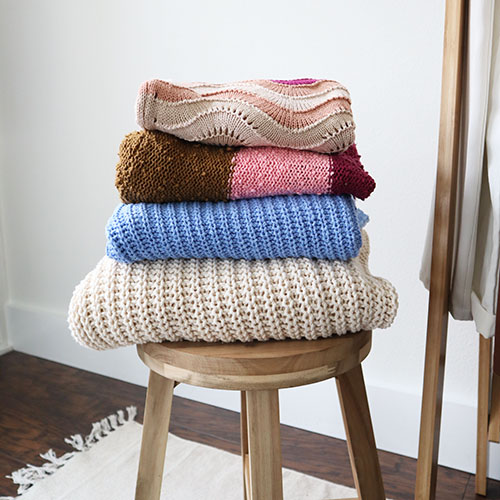
7. Buy secondhand
Well, no surprise here…I encourage you to buy secondhand when you do decide that you need something new for your wardrobe.
There are so many high quality items that are already floating around in the secondhand market. I have found some of my best pieces secondhand. Items made from natural materials such as silk, wool, linen, cotton, tencel and leather.
By buying these items secondhand, I am not contributing to the suffering of people, animals or the environment. I am helping to keep items out of the landfill in my own country and others.
But, as I mentioned in point 5, remember to look for quality items when you shop in the secondhand market.
This way of shopping will lead you to a wardrobe full of high quality, timeless pieces that are unique and you will love for years to come.
I routinely get comments on my wardrobe pieces, many more than when I shopped at fast fashion brands. And I think the main reason is because my clothing is of so much higher quality.
It also has the added benefit of saving me a lot of money!
Check out this post for tips on shopping in the local secondhand market and this one for online secondhand shopping.
8. Keep a thrift list (or any list)
As you become more familiar with the things that you own, you will be better able to identify the clothing items that would be a good addition to your wardrobe.
When you do identify an items that you would like to have, add it to a shopping list so that you are only looking for items that you need.
This way you won’t mindlessly shop and add things to your wardrobe that don’t fit in well.
9. Shop from sustainable clothing brands
If secondhand shopping isn’t something that you’re into,. there are brands that are sustainable. Ones that care about people and the environment.
To find sustainable brands, check out Good On You’s Directory of brands.
So, what do you think?
Do these steps seem easy to implement to you?
Will you take what you’ve read here and start implementing a more sustainable wardrobe?
If you liked this article, please share it with your friends, family and anyone else that you think might benefit from it.
Until next time,

Pin it for later…


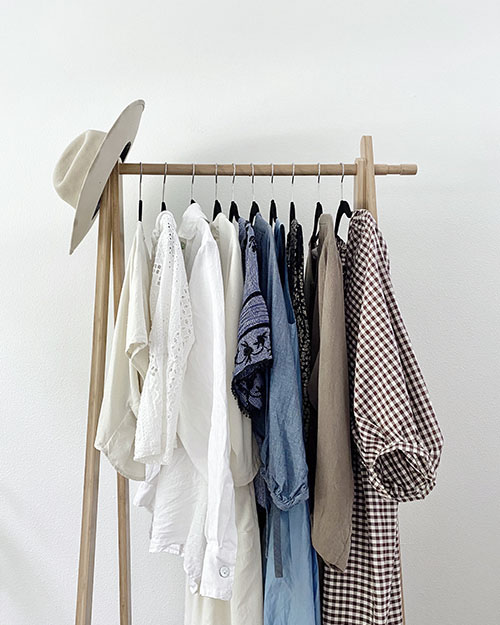
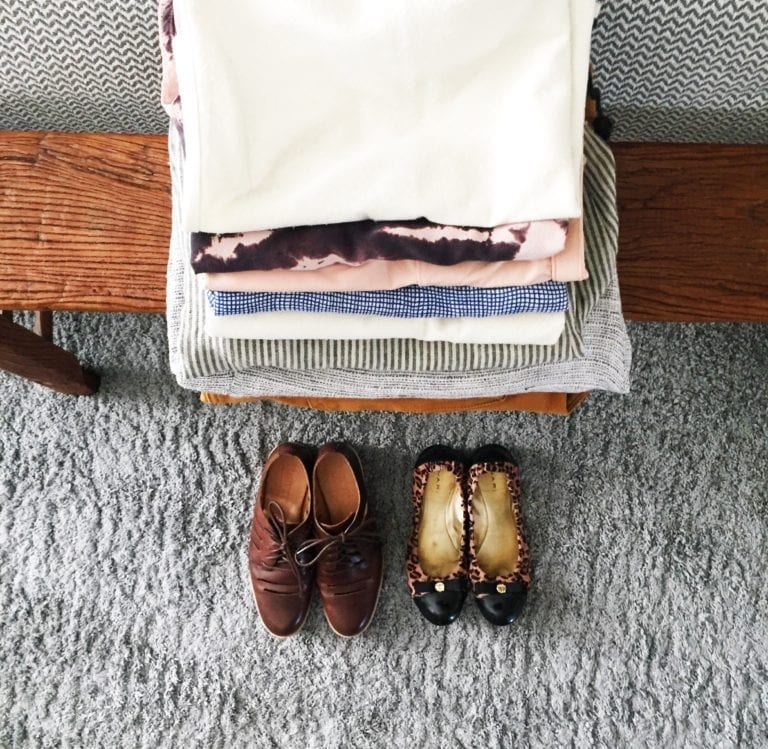
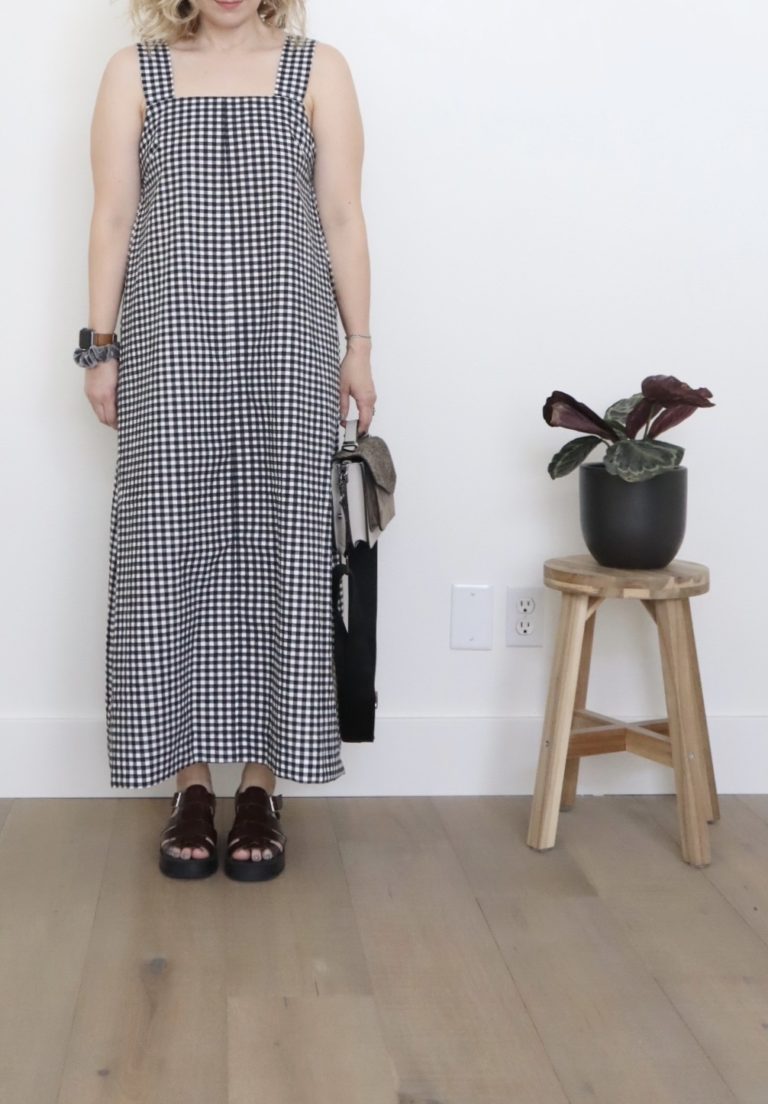
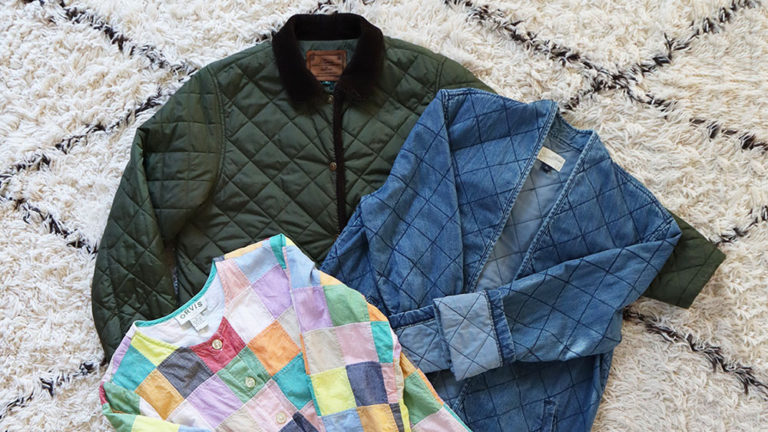

Pingback: How To Get The Mothball Smell out of Wool Clothes - Uncomplicated Spaces
Pingback: How to alter a tank top - Uncomplicated Spaces
This is a really great article! Thank you. The only thing I might add, having sewn my own clothes my entire life and having been a sewing tutor for years, is to purchase the most expensive, quality fabric you can afford. Just like fast fashion, bargain fabric is rarely worth your time and effort. Try for sales on really good fabric, but if you see something fabulous, just buy it! Fabric choice makes or breaks a home sewn project. Happy sewing!
Thank you so much for your comment, Ann. I really appreciate your feedback! That is a very great point about fabric and I will add your input, credit to you of course 😊
Hi Gillian,
I believe that the hardest step is to rid of stigma that secondhand shops are only for poor. No one want to be called poor, right? Nowadays, more and more people openly talk about their shoping choices, sustainable wardrobe and environmental protection, so it’s geting easier.
I would also thank you for encourage me to upcycle my pants. I don’t have any special sewing skills or sewing machine, but scissors and needle were enough to shorten my pants. Now instead of long, baggy trouser I have chic coulotte… and few extra coins in my wallet too 😉
Hi Agata! Thank you so much for your comment! I think that you are very right about the stigma associated with secondhand shops. That is definitely one area that I hope I am able to contribute to by showing secondhand fashion and encouraging purchasing from the secondhand market when the need for something arises.
And I am so happy that you felt encouraged to upcycle your pants! It sounds like the perfect alteration. This makes my whole evening!
I hope you enjoy the rest of your day,
Gillian